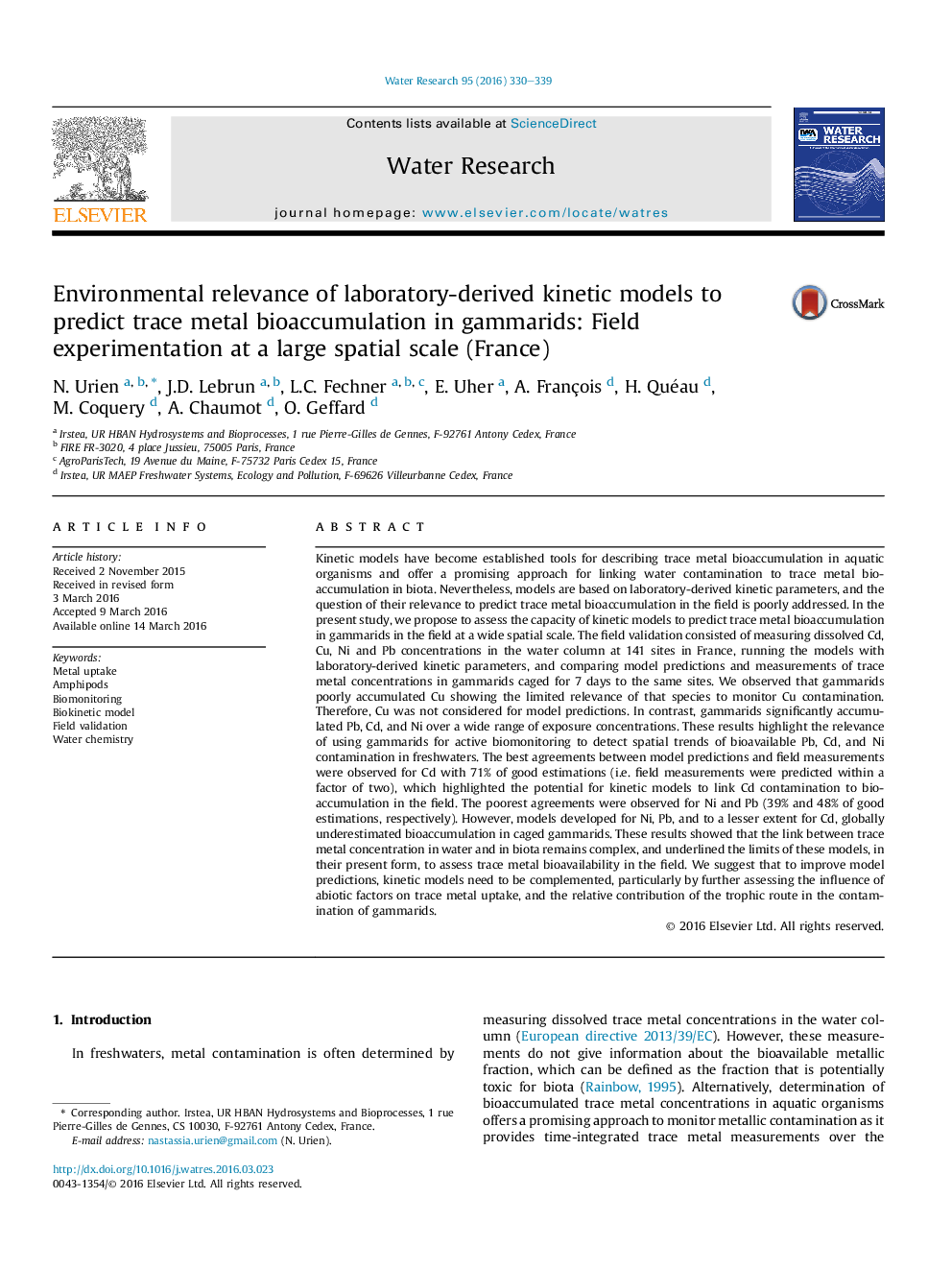| کد مقاله | کد نشریه | سال انتشار | مقاله انگلیسی | نسخه تمام متن |
|---|---|---|---|---|
| 6365058 | 1623073 | 2016 | 10 صفحه PDF | دانلود رایگان |
- Kinetic models of metal bioaccumulation were field-tested in gammarids at a national-wide scale.
- Models underestimated Ni, Pb, and Cd bioaccumulation in field-transplanted gammarids.
- Ni, Pb and Cd bioaccumulation cannot be linked to dissolved metal concentrations using the models in their present form.
Kinetic models have become established tools for describing trace metal bioaccumulation in aquatic organisms and offer a promising approach for linking water contamination to trace metal bioaccumulation in biota. Nevertheless, models are based on laboratory-derived kinetic parameters, and the question of their relevance to predict trace metal bioaccumulation in the field is poorly addressed. In the present study, we propose to assess the capacity of kinetic models to predict trace metal bioaccumulation in gammarids in the field at a wide spatial scale. The field validation consisted of measuring dissolved Cd, Cu, Ni and Pb concentrations in the water column at 141 sites in France, running the models with laboratory-derived kinetic parameters, and comparing model predictions and measurements of trace metal concentrations in gammarids caged for 7 days to the same sites. We observed that gammarids poorly accumulated Cu showing the limited relevance of that species to monitor Cu contamination. Therefore, Cu was not considered for model predictions. In contrast, gammarids significantly accumulated Pb, Cd, and Ni over a wide range of exposure concentrations. These results highlight the relevance of using gammarids for active biomonitoring to detect spatial trends of bioavailable Pb, Cd, and Ni contamination in freshwaters. The best agreements between model predictions and field measurements were observed for Cd with 71% of good estimations (i.e. field measurements were predicted within a factor of two), which highlighted the potential for kinetic models to link Cd contamination to bioaccumulation in the field. The poorest agreements were observed for Ni and Pb (39% and 48% of good estimations, respectively). However, models developed for Ni, Pb, and to a lesser extent for Cd, globally underestimated bioaccumulation in caged gammarids. These results showed that the link between trace metal concentration in water and in biota remains complex, and underlined the limits of these models, in their present form, to assess trace metal bioavailability in the field. We suggest that to improve model predictions, kinetic models need to be complemented, particularly by further assessing the influence of abiotic factors on trace metal uptake, and the relative contribution of the trophic route in the contamination of gammarids.
Journal: Water Research - Volume 95, 15 May 2016, Pages 330-339
